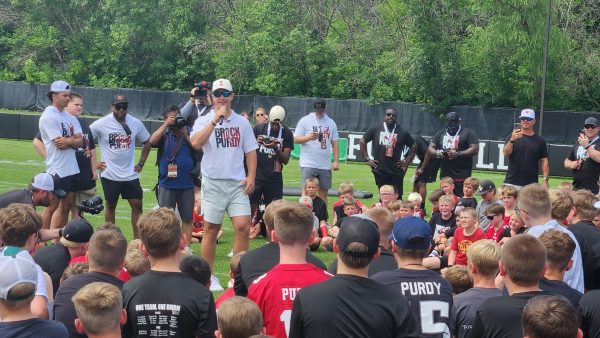Spikeball gains recognition at Iowa State
February 1, 2012
Spikeball, a relatively unknown game, is looking to make a name for itself at Iowa State.
Patrick Benson, junior in civil engineering, is the driving force and president of the Spikeball Club.
“I made the decision to start up the Spikeball Club this past fall 2011 semester,” Benson said. “I appointed myself as president and had two of my buddies who I often play spikeball with to be vice president and treasurer.”
To play the game of spikeball, you need a spikeball net, a spikeball and four people total (two players on each team). The rules are the same as those of volleyball except when a person goes to hit the spikeball, instead of hitting the ball over a net as in volleyball, they must hit it off a spikeball net.
The net is similar to a mini trampoline but with a fishnet surface. There are no boundaries, and players may run anywhere they need to get to the ball. The game is played to 21, and points are kept using rally scoring.
Spikeball can be played anywhere from dorm rooms to parking lots and snow covered grounds to beaches, largely because of its mobility.
“As far as equipment goes, all you need to play spikeball is the ball and the net,” Benson said. “One of the beautiful things about the game is that it is completely portable. The net is able to break down entirely, and it all fits nicely into it’s own drawstring bag that you can easily carry around on your back.”
Ben Streit, sophomore in computer engineering and vice president of the Spikeball Club, differentiates spikeball from volleyball.
“Despite the many similarities between spikeball and volleyball, they are two completely different games,” Streit said. “Also, since spikeball is easier for most people to pick up, you are able to get more intensive rallies, unlike in volleyball where if you have someone who has never played before, you won’t rally for very long.”
Unlimited boundaries along with the simplicity of the game attribute to the competitive nature of spikeball.
“My favorite part about spikeball are the crazy points,” said Jason Manella, sophomore in kineseology and health and club treasurer. “I like when things start to get hectic and you have people running everywhere, scrambling to get the next shot. It makes the game a lot more fun.”
The club is currently brainstorming on where to hold their practices.
“As of now, we meet once a week on Tuesday nights at Lied around 8 p.m.,” Manella said. “We are looking into getting a space at Forker for the rest of the winter to play. Once spring comes around, we will be playing out on campus, pretty much anywhere we can find green space.”
Spikeball continues to grow in popularity thanks to Benson, Streit and Manella’s dedication to the sport.
“We have a little over 30 people registered in the student organizations’ database, but we are trying hard to grow our numbers,” Benson said. “Spikeball is now being played on more than 50 college campuses, and there are official Spikeball Clubs at about 15 of those including Iowa State.”
Benson’s main selling point is the rush received from the game.
“When it comes to playing the game itself, hitting the ball as hard as you can off the net and watching it fly over the opponents’ heads is an awesome feeling,” he said
















